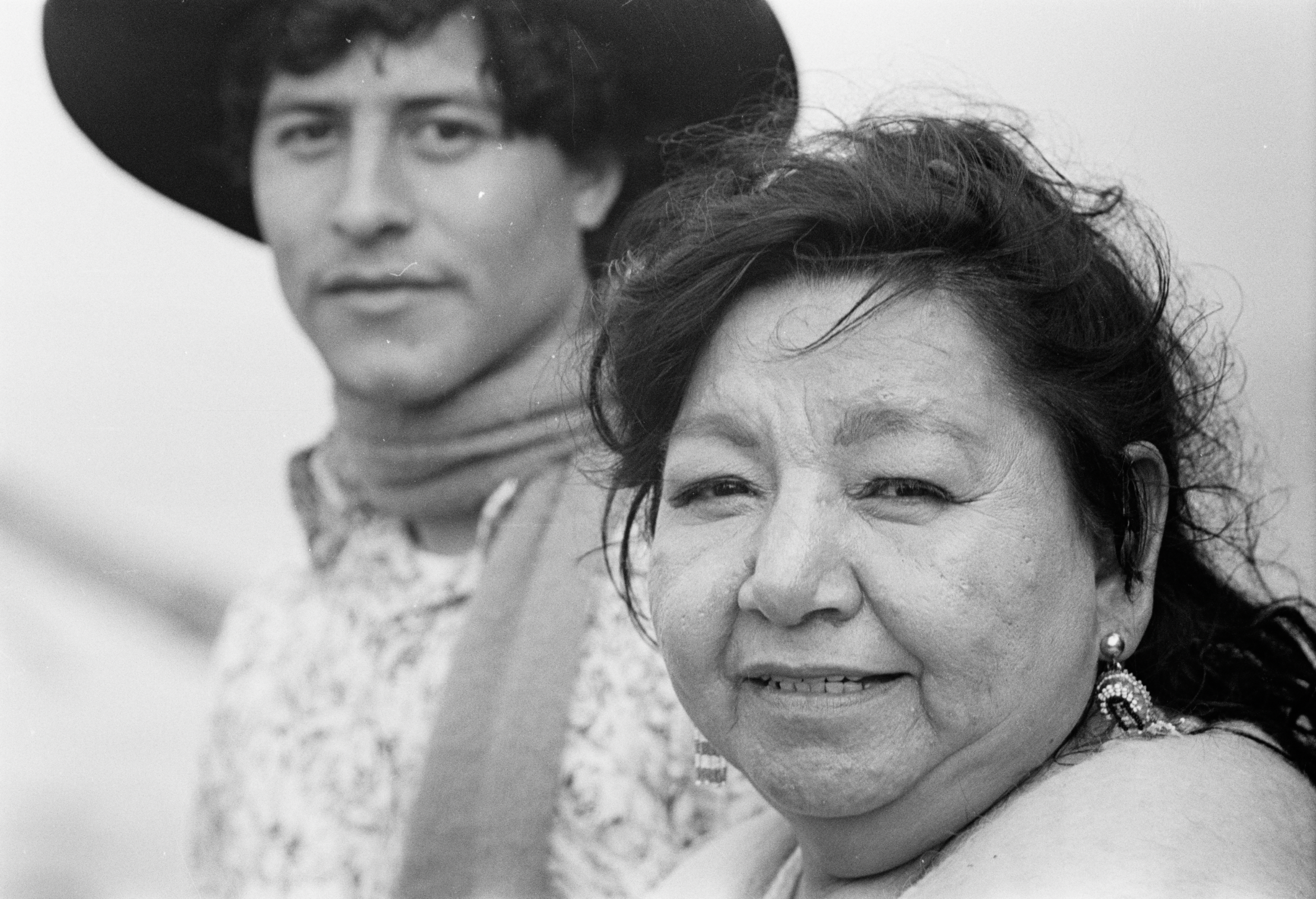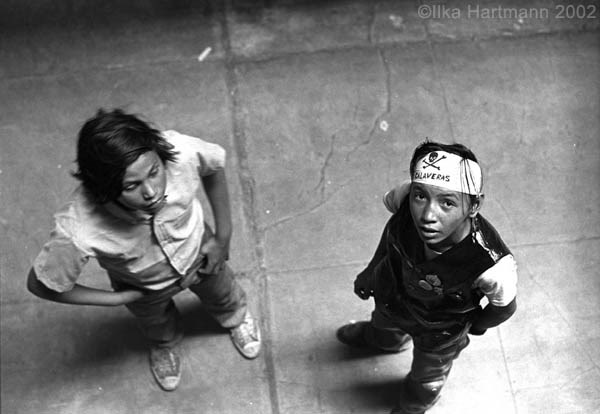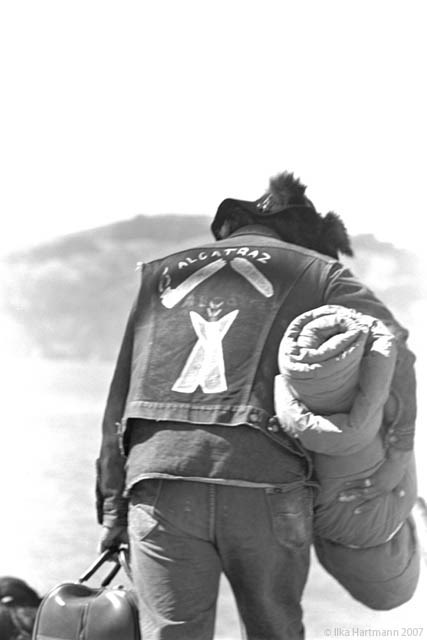Last updated: June 11, 2024
Article
We Hold the Rock

The Alcatraz Indian Occupation
by Dr. Troy Johnson, Cal State Long Beach
European discovery and exploration of the San Francisco Bay Area and its islands began in 1542 and culminated with the mapping of the bay in 1775. Early visitors to the Bay Area were preceded 10,000 to 20,000 years earlier, however, by the native people indigenous to the area. Prior to the coming of the Spanish and Portuguese explorers, over 10,000 indigenous people, later to be called the Ohlone (a Miwok Indian word meaning "western people"), lived in the coastal area between Point Sur and the San Francisco Bay.
Early use of Alcatraz Island by the indigenous people is difficult to reconstruct, as most tribal and village history was recorded and passed down generation-to-generation as an oral history of the people. A large portion of this oral history has been lost as a result of the huge reduction of the California Indian population following European contact and exploration. Based on oral history it appears that Alcatraz was used as a place of isolation or ostracization for tribal members who had violated a tribal law or taboo, as a camping spot, an area for gathering foods, especially bird eggs and sea-life, and that Alcatraz was utilized also as a hiding place for many Indians attempting to escape from the California Mission system.
Once Alcatraz Island became a prison, both military prisoners and civilians were incarcerated on the island. Among these were many American Indians. The largest single group of Indian prisoners sentenced to confinement on Alcatraz occurred in January 1895 when the U.S. government arrested, tried and shipped nineteen Moqui Hopi to Alcatraz Island. Indian people continued to be confined as prisoners in the disciplinary barracks on the island through the remainder of the 1800s and the early 1900s.

March 9, 1964
"We looked up all the history and found out that many Indians had been held prisoners there, so in a way, it was already Indian land. We studied the tides, planned strategy and looked for someone to take us to the island." - Belva Cottier, Organizer of 1964 Alcatraz Takeover
On March 9, 1964, five Sicangu Lakota Indians landed on Alcatraz and declared it as Indian Land. They cited the 1868 Fort Leramie Treaty that deserted federal land could return to the Sioux. The 1964 occupation lasted for only four hours and was carried out by five Sicangu Lakota, led by Belva Cottier and her cousin Richard McKenzie.
In the subsequent weeks, the U.S. Attorney rejected the group's assertion, deeming it "unfounded", and in July 1964, the U.S. General Services Administration (GSA) took over custody of Alcatraz Island. Responding to San Francisco's expressed desire to transform the island into a recreational park, the GSA set a deadline of December 1969 for the Department of the Interior to investigate the potential of the site as a federal recreation area.
This short occupation is significant because the demands for the use of the island for a cultural center and an Indian university would inspire another occupation five years later.

November 9, 1969
On this day, Indian people once again came to Alcatraz Island when Richard Oakes, a Mohawk Indian, and a group of Indian supporters set out in a chartered boat, the Monte Cristo, to symbolically claim the island for the Indian people. On November 20, 1969, this symbolic occupation turned into a full scale occupation which lasted until June 11, 1971.
In actuality, there were three separate occupations of Alcatraz Island, one on March 9, 1964, one on November 9, 1969, and the occupation which lasted nineteen months which began on the 20th of November, 1969.
The 1964 occupation lasted for only four hours and was carried out by five Sioux, led by Richard McKenzie. This short occupation is significant because the demands for the use of the island for a cultural center and an Indian university would resurface almost word for word in the larger, much longer occupation of 1969.
The November 9, 1969 occupation was planned by Richard Oakes, a group of Indian students, and a group of urban Indians from the Bay Area. Since many different tribes were represented, the name "Indians of All Tribes" was adopted for the group. They claimed the island in the name of Indians of all tribes and left the island to return later that same evening. In meetings following the November 9th occupation, Oakes and his fellow American Indian students realized that a prolonged occupation was possible. Oakes visited the American Indian Studies Center at UCLA where he recruited Indian students for what would become the longest prolonged occupation of a federal facility by Indian people to this very day. Eighty Indian students from UCLA were among the approximately 100 Indian people who occupied Alcatraz Island.
It is important to remember that the occupation force was made up initially of young urban Indian college students. And the most inspirational person was Richard Oakes. Oakes is described by most of those as handsome, charismatic, a talented orator, and a natural leader. Oakes was the most knowledgeable about the landings and the most often sought out and identified as the leader, the Chief, the mayor of Alcatraz.

The back and forth with the Government
Once the occupiers had established themselves on the island, organization began immediately. An elected council was put into place and everyone on the island had a job; security, sanitation, day-care, school, housing, cooking, laundry, and all decisions were made by unanimous consent of the people.
The federal government initially insisted that the Indian people leave the island, placed an ineffective barricade around the island, and eventually agreed to demands by the Indian council that formal negotiations be held. From the Indians side, the negotiations were fixed. They wanted the deed to the island, they wanted to establish an Indian university, a cultural center, and a museum. The government negotiators insisted that the occupiers could have none of these and insisted that they leave the island.
By early 1970 the Indian organization began to fall into disarray. Two groups rose in opposition to Richard Oakes and as the Indian students began returning to school in January 1970, they were replaced by Indian people from the urban areas and from reservations who have not been involved in the initial occupation. Additionally, many non-Indians now began taking up residency on the island, many from the San Francisco hippie and drug culture. The final blow to the organized leadership occurred on January 5, 1970, when Oakes's 13 year old stepdaughter fell three floors down a stairwell to her death. Following Yvonne's death, Oakes left the island and the two competing groups maneuvered back and forth for leadership on the island.
The federal government responded to the occupation by adopting a position of non-interference. The FBI was directed to remain clear of the island. The Coast Guard was directed not to interfere, and the Government Services Administration (GSA) was instructed not to remove the Indians from the island. While it appeared to those on the island that negotiations were actually taking place, in fact, the federal government was playing a waiting game, hoping that support for the occupation would subside and those on the island would elect to end the occupation. At one point, secret negotiations were held where the occupiers were offered a portion of Fort Miley, in San Francisco, as an alternative site to Alcatraz Island. By this time, mid-1970, however, those on the island had become so entrenched that nothing less than full title to the island, the establishing of a university and cultural center, would suffice.
In the meantime, the government shut off all electrical power, and removed the water barge which had provided fresh water to the occupiers. Three days following the removal of the water barge, a fire broke out on the island. Several historic buildings were destroyed. The government blamed the Indians, the Indians blamed undercover government infiltrators trying to turn non-Indian support against them.
The new population on the island became a problem as time passed. The daily reports from the government caretaker on the island as well as testimony from the remaining original occupiers complain of the open use of drugs, fighting over authority, and general disarray of the leadership. An egalitarian form of government was supposed to prevail, yet no leadership was visible with which the government could negotiate.
The occupation continued on into 1971 with various new problems emerging for the Indian occupiers. In an attempt to raise money to buy food, they allegedly began stripping copper wiring and copper tubing from the buildings and selling it as scrap metal. Three of the occupiers were arrested, tried and found guilt of selling some 600lbs of copper. In early 1971, the press, which had been largely sympathetic to this point turned against them and began publishing stories of alleged beatings and assaults; one case of assault was prosecuted. Soon, little support could be found.

photo copyrighted by ilka hartmann
Eventually, all things must come to an end...
In January 1971, two oil tankers collided in the entrance to the San Francisco Bay. Though it was acknowledged that the lack of an Alcatraz light or fog horn played no part in the collision, it was enough to push the federal government into action. President Nixon gave the go ahead to develop a removal plan -- to take place when the smallest number of people were on the island and to use as little force as possible.
On June 10, 1971, armed federal marshals, FBI agents, and special forces police swarmed the island and removed five women, four children, and six unarmed Indian men. The occupation was over.
The success or failure of the occupation should not be judged by whether the demands of the occupiers were realized. The underlying goals of the Indians on Alcatraz were to awaken the American public to the reality of the plight of the first Americans and to assert the need for Indian self-determination. As a result of the occupation, either directly or indirectly, the official government policy of termination of Indian tribes was ended and a policy of Indian self-determination became the official US government policy.
During the period the occupiers were on Alcatraz Island, President Nixon returned Blue Lake and 48.000 acres of land to the Taos Indians. Occupied lands near Davis California would become home to a Native American university. The occupation of Bureau of Indian Affairs offices in Washington, D.C. would lead to the hiring of Native American's to work in the federal agency that had such a great effect on their lives.
Alcatraz may have been lost, but the occupation gave birth to a political movement which continues to today.
